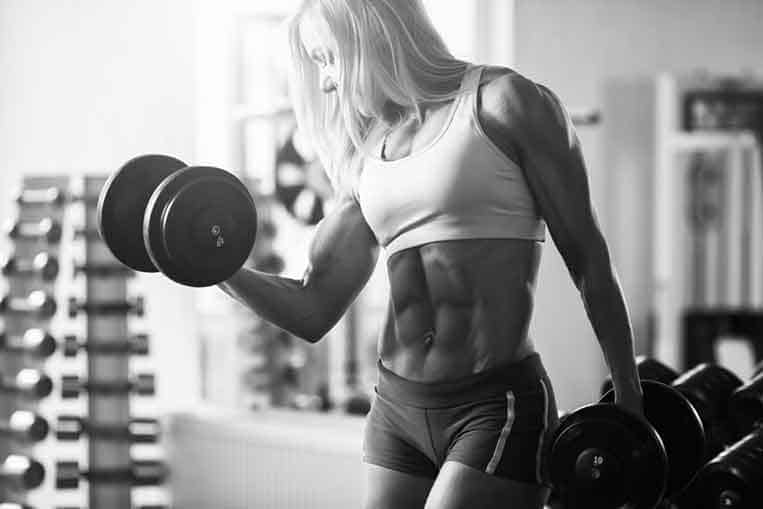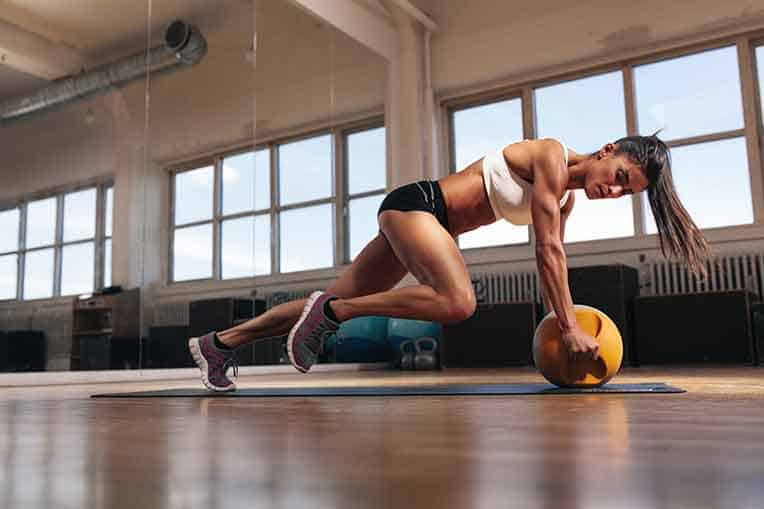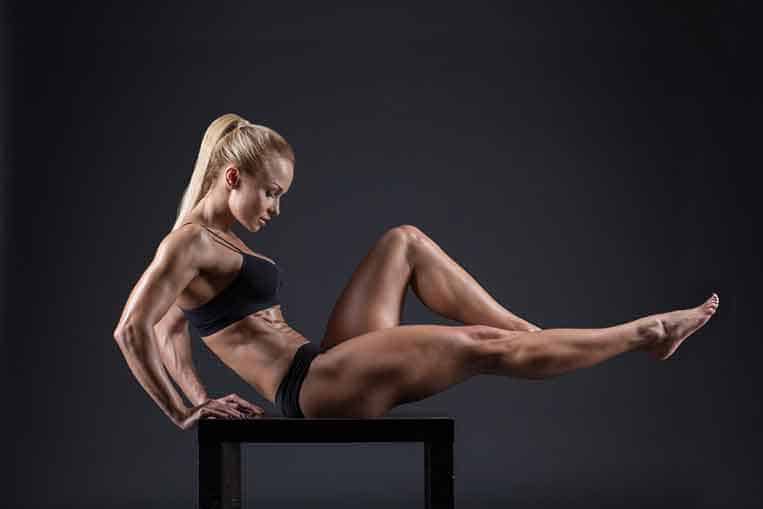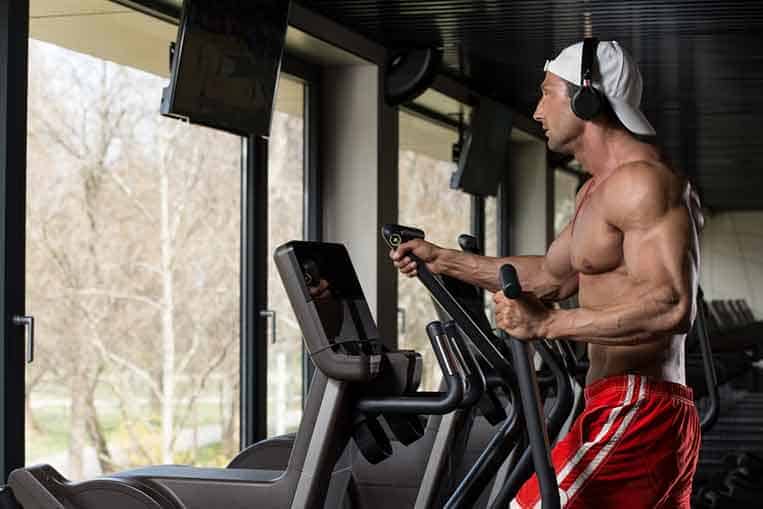
I know most people who lift are mentally allergic to cardio-vascular training, but it might be the most important aversion you’ll ever overcome.
Many of you would do some pretty crazy things if you knew it would improve your muscle gains, but cardio is viewed as a muscle eating, gains robbing activity.
What if it was a muscle-augmenting activity? What if it helped your resistance training in more ways than one? What if…
What if you’re actually missing out on some strength and physique improvements?
Shock, horror, right?
Methods some strength athletes follow is to put some high intensity interval training (HIIT) into their workouts, or higher rep sets with lower weight at faster tempos, in order to check the “cardio” box”.
Bear in mind that I want you to be as strong and musclebound as possible. I’m not here to impede your progress in any way, but to advance it, so shed the skepticism now. It will serve you better.
High Intensity Interval Training Takes Different Forms
First, before we get ahead of ourselves, it’s best to make one thing clear. HIIT is whatever you want it to be, so long as it incorporates:
- Roughly 5 minutes of warm-up at 50-60% effort output
- Several short rounds of near maximal (80-90%) perceived effort – lasting 15 to 30 seconds
- Passive or active rest sets between rounds
- Roughly 5 minutes of warm down, starting at 50% effort and tapering off
Example 1 – HIIT Cycling
An example of the a classic cardio style HIIT would be to use a spin bike or static bike.
With a bike you can cycle for the whole duration, and your rounds would be about 30 seconds each at 80-90% effort (often called RPE – Rated Perceived Exertion).
The rests between rounds can be 50-60% RPE, just like the warm-up, for 90 seconds, and same for the warm-down at the end.
Example 2 – HIIT Weights
Another example would be to do HIIT with resistance training instead. Get up to 60% of your squat and deadlift 1RMs (one rep max) within a 5 minute warm-up.
As for the HI rounds, rated perceived exertion can be achieved by taking the same 60% of 1RM and repping it with fast cadence to within 1 or 2 reps of failure.
So basically stop the round when you have 1 or 2 reps left in you. For most people this will fall into the range of 8 to 15 reps.
Between each round take 90 seconds of rest.
The warm-down for the weights could be something light like walking on a treadmill or cycling very low resistance for 5 minutes.
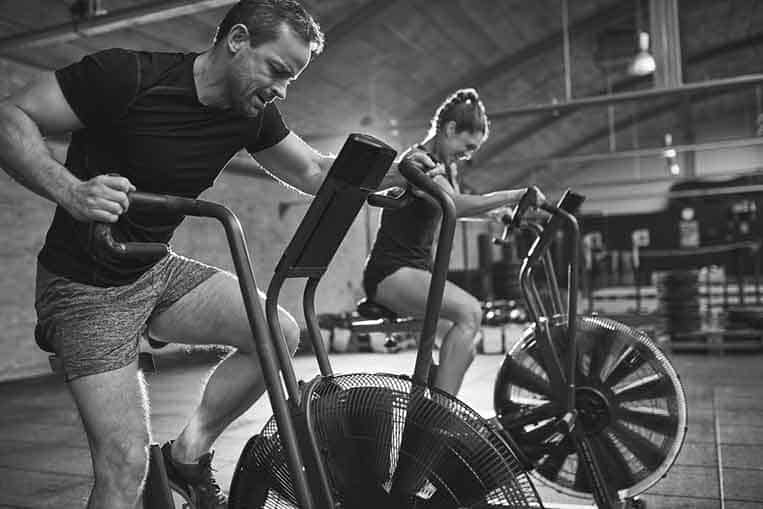
So, Which Is Better – HIIT Weights or HIIT Cycling?
Logic tells us that performing HIIT weights as your cardio training would add to your strength and muscle growth gains given that it’s using some movements from your strength training.
However, this doesn’t tend to be true. In fact, if you do a fully taxing HIIT cycling session, you will feel a leg pump that rivals, or even beats, that of HIIT squats.
There’s also evidence that concurrent training in this manner, involving interval cycling and regular weights training can improve gains. This is in part due to the larger muscle groups – especially legs – having roughly equal proportions of type 1 and type 2 muscle fiber.
There has been a study carried out which directly compared these two HIIT methods.
In some areas the study was poorly designed and controls could have been better, but there were some interesting takeaways that might help you.
One such finding was strength measurements were not greatly different in the HIIT weights and the HIIT cycling groups following the study. However, like I said, there wasn’t a control group who performed strength-only training to determine what the maximum strength could be.
Either way, strength improved for both groups and the improvements were similar.
Aerobic fitness on the other hand was improved in the HIIT cycling group by enough to outweigh any study design problems. i.e HIIT cycling is better for your CV system.
Nothing really astonishing there, but with it fresh in your mind, let’s look at program design and the wider implications to muscle and strength improvements, which is why we’re all here anyway.

Fitting Cardio Into Your Training Program
High intensity interval training is unmatched with respect to cardio-vascular health and elevated rates of fat burning that results from the excess post-exercise oxygen consumption (EPOC).
But you don’t need me to tell you that cardio is good for you. You want to know how you can manage it and still be a beast.
The first mistake that can be made is to simply bolt cardio onto their program. That’s fine if you have a moderate to low training intensity/volume as it is, but can lead to overtraining and fatigue problems if you’re already pushing your limit every week.
That also provides a segue to discussing the HIIT weights versus HIIT cycling methods. Some of you might still be thinking it’s an opportunity to add some gut-busting squat, deadlift, other compound lift, sets in to really pump up that volume and maybe add some mass.
The danger here is that you limit your output for the days when you are doing your really heavy lifts. Something you definitely don’t want to do is stagnate your strength gains by pumping out HIIT sessions a couple times a week.
In that study they said strength gains were similar but they were only measuring knee extensions which none of the participants were including in their program prior to the study. They were also using predicted 1RMs based on rep-count and fatigue, not true 1RMs.
No-one can really argue with me here: if you’re squatting and deadlifting way into the red on your cardio days, you’re not going to be able to lift your heaviest on your strength days.
So, that leaves us with HIIT cycling. The first few times you push a solid interval cycling session in, you’re going to feel it the next day, but you will get used to this, and eventually it will hardly affect your heavy lifting program at all.
Additionally, the cardio-vascular fitness improvements will help you recover faster between your heavy sets, hypertrophy sets and days in between.
If you have some body fat to lose, it’s another reason to get on the bike, and you can push it harder while staying safer than you ever could if you were doing HIIT waits to near maximal effort.
Muscle failure on the bike just means you stop and recover. On the squat rack it can be a different matter.
There’s even the possibility that you’ll get some size increase in your legs. Previous research into concurrent training indicates this as a possibility and it might be due to you building up both muscle fiber types as opposed to focusing on one.

Cardio for Lifters Conclusion – Look At the Bigger Picture
I’m going to get all philosophical on you now, so be warned.
if I haven’t convinced you to introduce some intense cardio to your program then just hear me out here and I’ll say no more.
A lot of you are probably trying to increase your numbers, be it on the big three: squat, deadlift and bench, or just in general across the board.
I get that, I really do, but it’s important to remember that it’s all for nothing if we don’t have our health. And CV work is health, ladies and gents.
Strong is great, but strong and fit is more likely to get you to a ripe old age.
Some guys walk on treadmills for 40 minutes – you’ll see the biggest bodybuilders doing this all the time. It’s like they are afraid their muscles will melt if they do anything more intense. Varying your exercises is another great tip.
The light treadmill walking thing is like a virus that has made its way to all gyms everywhere. Big guys just do it.
No wonder they are bored off their minds. Walking in a gym sucks.
Whereas, a hard interval session on a big will fly past and be done before you even know it.
The hardcore results you will get from it once you have done it for a few weeks will make you a believer, trust me. And the swole-factor is ridiculous.
Additionally, you won’t be so taxed from a cardio-vascular standpoint during your lifting sessions, which might ultimately lead to increased volume or intensity on the whole.
I’ll finish this article with a bit of practical advice. It’s true that when you do your cardio the day before your leg workout, you might feel some of the fatigue the following day, at least for the first few times you do it.
The workaround is to alternate the upper and lower body according to the program you are following. I haven’t mentioned the rowing machine in this article yet but it’s about to come into your life in a big way.
The day before leg day, do your interval/HIIT cardio on the rowing machine. The day before chest or shoulder day do you HIIT cycling.
Could anything be simpler or more elegant than that?

